When it comes to cycling, the handlebars are one of the most important components of a bike. They provide stability, control, and comfort during rides, and come in a variety of shapes, sizes, and styles. From drop bars to flat bars, each handlebar type offers a different riding experience. Whether you’re a seasoned cyclist or a beginner, understanding the different types of handlebars available can help you choose the right one for your needs.
In this blog post, we’ll take you through everything you need to know about handlebar types. We’ll cover the pros and cons of each type, their intended uses, and what kind of rider they’re best suited for.
We’ll also discuss the various materials used to make handlebars, and how they can affect your overall cycling experience. By the end of this post, you’ll have a better understanding of handlebars and be able to make an informed decision when choosing the right handlebar for your bike.
So, let’s dive in and explore what are the handlebar types with us.
Overview of different types of handlebars
Handlebar types refer to the shape of the handlebars on a bicycle. Common handlebar types include flat, drop, riser, bullhorn, aero, and cruiser bars. Flat bars are the most common type of handlebars and offer good control for general riding.
Drop bars are curved down towards the rider and allow for multiple hand positions which can be more comfortable when riding longer distances.
Riser bars have an upward curve that gives more control while climbing hills or cornering.
Bullhorns have two sharp bends at each end creating a “U” shape that allows riders to get low over their bike for increased aerodynamics.
Aero bars feature long extensions made from aluminum or carbon fiber and are designed for time trial racing as they provide an aerodynamic advantage over other bar types by placing the rider in a tucked position.
Types Of Handlebars
Handlebars are one of the most important components of a bicycle. They play a vital role in determining the comfort and stability of the rider while cycling.
There are various types of handlebars, each with their own unique features and benefits. The most common bike handlebars are including –
A. Drop Handlebars
B. Flat handlebars
C. Riser Handlebars
D. Bullhorn Handlebars
E. Cruiser Handlebars
F. Butterfly or Trekking Handlebars
G. BMX Handlebars
H. Aero Handlebars
A. Drop Handlebars
Drop handlebars are a type of bicycle handlebar that feature a deep U-shape, allowing the rider to get into an aerodynamic position while still having multiple hand positions.
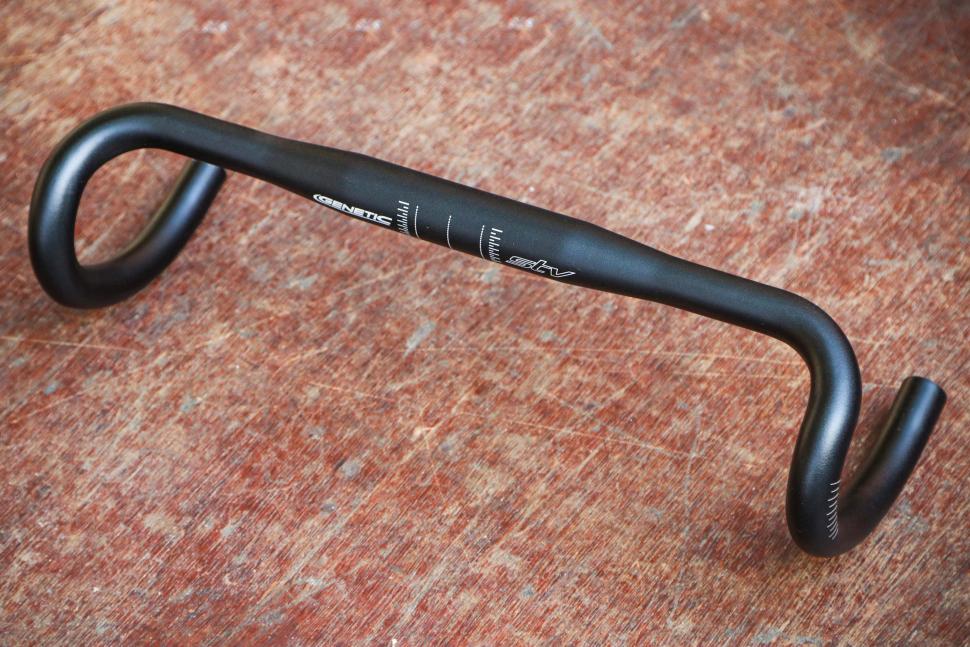
This makes them ideal for road racing and touring, as they offer increased control in the drops (the lowest part of the bar) compared to flat or riser bars.
In addition, drop handlebars can also provide more comfort on long rides due to their ergonomic design.
To help you make a more informed decision, we’ve compiled a list of the pros and cons of drop handlebars in bullet points below:
Pros:
- Offers a more aerodynamic riding position for increased speed and efficiency
- Provides better control and handling in technical and steep descents
- Allows for multiple hand positions for increased comfort during longer rides
- Suitable for a variety of riding styles including road racing, cyclocross, and touring
Cons:
- Can be uncomfortable for riders with limited flexibility or back problems
- Limited visibility due to the lowered position of the handlebars
- May require a longer stem to achieve a comfortable riding position
- Can be more expensive than other types of handlebars
B. Flat Handlebars
The flat handlebar of a bike is a crucial component that plays a critical role in providing riders with a comfortable and efficient riding position. Flat handlebars are typically wider than other types of handlebars, which allows for better control and stability when maneuvering through challenging terrain.
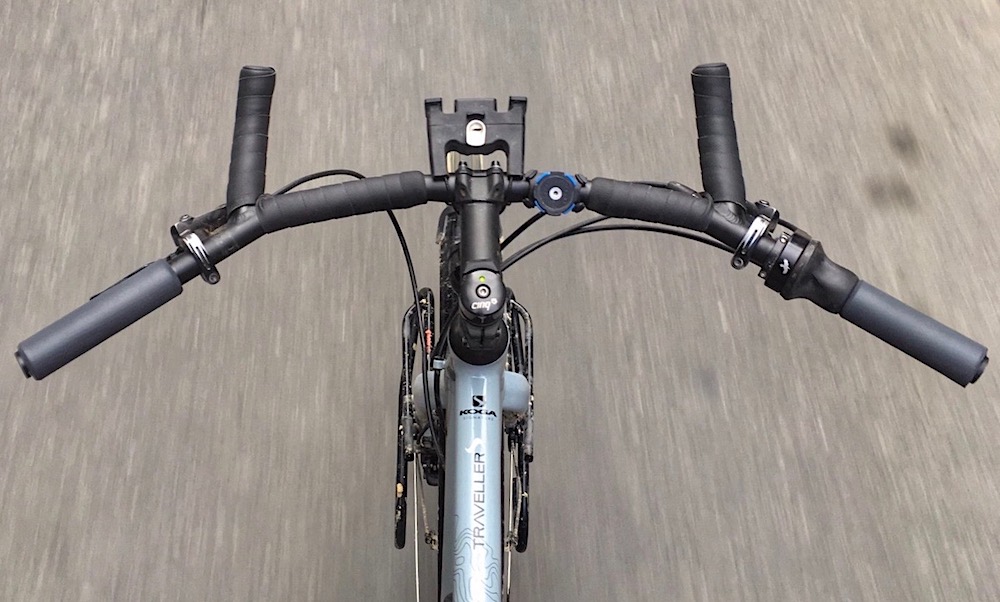
Additionally, the flat design of these handlebars encourages riders to sit upright, reducing strain on the wrists, shoulders, and lower back. This makes them an ideal choice for riders who are looking for a reliable and comfortable handlebar that can enhance their riding experience.
By providing superior control and comfort, the flat handlebar is an essential element that can help riders tackle even the toughest cycling challenges with ease.
To help you make a more informed decision, we’ve compiled a list of the pros and cons of flat handlebars in bullet points below:
Pros:
- Flat handlebars provide a more upright riding position
- A great choice for recreational riders, commuters, and those with back problems
- Offering more control and stability when riding on rough terrain than drop bars
- They are easier to maintain and upgrade than other handlebars
- They are less expensive than drop bars
Cons:
- Flat handlebars may cause discomfort in the hands and wrists over long rides
- They are also not an ideal option for aerodynamic riding positions
- They are not as suitable to drive faster as drop bars
C. Riser Handlebars
Another type of handlebar is the riser handlebar, which is commonly used in mountain bikes and other off-road bicycles. These handlebars are designed to provide a comfortable and upright riding position, which is ideal for long-distance rides and recreational cycling.
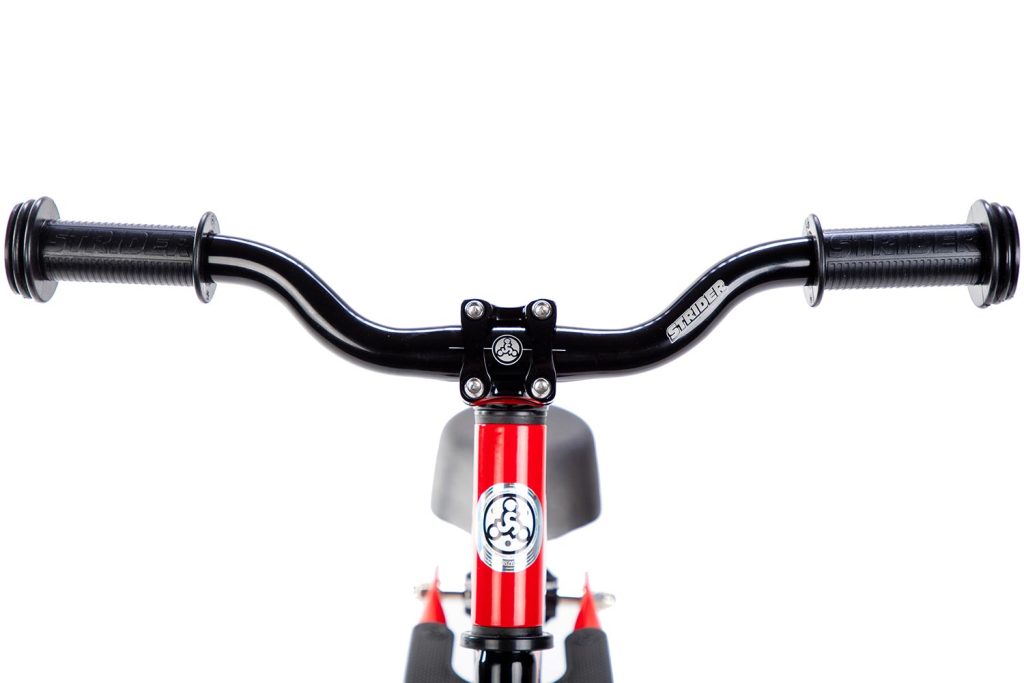
The riser handlebars have a straight design that rises from the stem to the grips, providing a higher and more comfortable position for the rider.
They also offer better control and maneuverability, making them ideal for technical trails and rough terrain.
However, with any bike component, there are pros and cons to consider before making the switch.
Pros:
- Improved comfort and reduced strain on the neck and back
- Enhanced control and stability, especially when riding on rough terrain or downhill
- Better visibility and awareness of surroundings while riding
- Increased versatility in riding styles from commuting to mountain biking
Cons:
- May not be suitable for riders who prefer a more aggressive and aerodynamic position
- May add additional weight to the bike
- Can limit the ability to reach maximum speed due to increased wind resistance
- May require adjustments to other components such as brakes and shifters.
D. Bullhorn Handlebars
Bullhorn handlebars are a popular style of bike handlebars that have become increasingly popular in recent years due to their versatility and comfort. They feature a slightly curved design, with the top portion extending forward for better aerodynamics and control when riding.
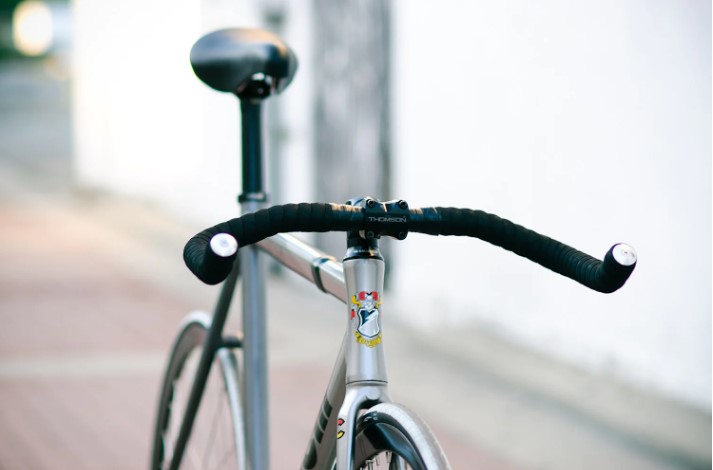
The bullhorns offer riders improved stability when cornering or maneuvering through tight spaces on the road or trail.
Additionally, they provide multiple hand positions so that riders can choose the most comfortable position while cycling.
When considering whether to use these handlebars, it is important to weigh the pros and cons. Some of the advantages and drawbacks of using Bullhorn handlebars include:
Pros:
- Provides a more aerodynamic riding position, reducing wind resistance and increasing speed.
- Offers a variety of hand positions, allowing riders to shift their weight and avoid fatigue.
- Ideal for urban riding, as they offer better control and maneuverability in traffic.
- Easy to install and adjust, making it a popular choice for DIY bike customization.
- Offers a sleek and modern look, adding to the overall aesthetic of the bike.
- Allows for easier mounting of accessories like lights and computers.
Cons:
- May not be as comfortable for long rides or for riders with back or neck problems
- Requires a longer stem to maintain proper reach
- Limits the ability to brake or shift while in an aerodynamic position
- May not be as suitable for off-road or technical riding
E. Cruiser Handlebars
Cruiser handlebars are a type of bicycle handlebar that provides a comfortable, upright riding position. They feature wide grips and usually have slightly swept-back ends for an ergonomic feel.
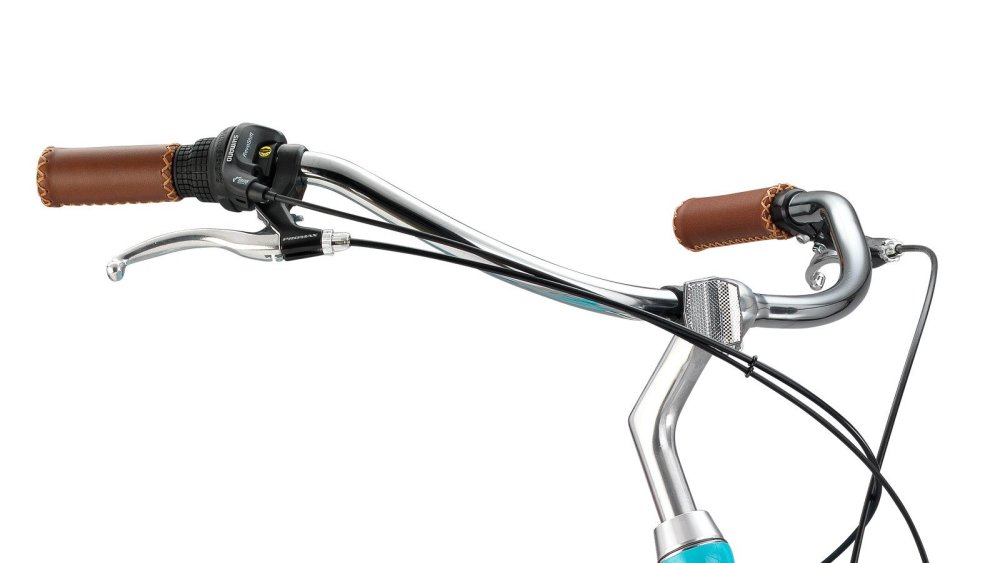
Not only do these bars offer comfort, but they also allow you to easily reach the brakes and shifters from your natural hand placement on the bars.
Cruiser handlebars come in different widths and styles, so you can find one that fits your style of biking perfectly!
Here are some pros and cons of cruiser handlebars in bullet points:
Pros:
- Provide a relaxed and upright riding position, reducing strain on the back and neck
- The wide grip allows for easy steering and control
- Can accommodate riders of different heights and sizes
- Adds a classic and retro look to the bike
Cons:
- Not ideal for high-speed or aggressive riding, as they offer less control and stability
- May not fit well in tight spaces or narrow paths
- Limited hand positions can cause hand fatigue on longer rides
- May not be suitable for certain types of bikes or riding styles.
F. Butterfly or Trekking Handlebars
The butterfly handlebar is a unique and innovative design that has gained popularity in the cycling community. Its distinct shape allows for multiple hand positions, providing a comfortable and efficient ride for long distances. The handlebar’s versatility also makes it a great choice for touring and adventure cycling, as it allows for easy customization to suit the rider’s needs.
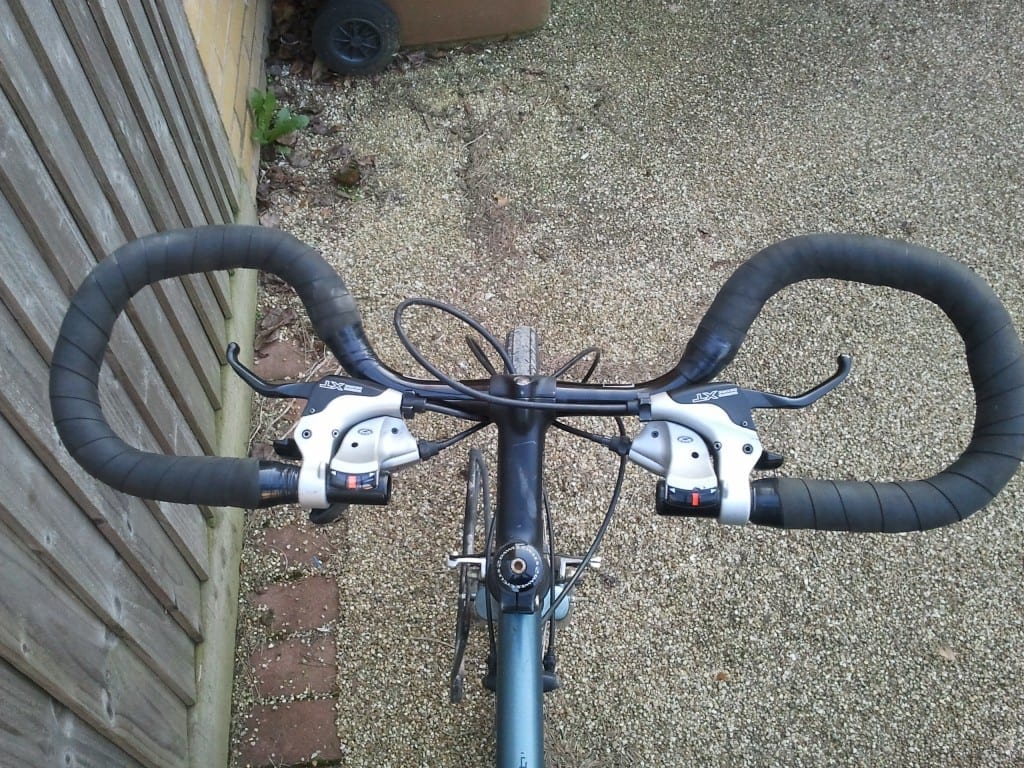
The butterfly handlebar is typically made of lightweight materials such as aluminum or carbon fiber, ensuring a durable and reliable component for any bike.
Overall, the butterfly handlebar is a great addition to any cyclist’s equipment, providing comfort, efficiency, and versatility for a variety of riding styles.
Let’s find the pros and cons of a butterfly or trekking handlebars in a short.
Pros:
- Provides multiple hand positions for enhanced comfort
- Suitable for long-distance cycling
- Offers better control in windy conditions
- Allows for a more upright riding position, reducing strain on the back and neck
- More room for accessories like lights, bells, and GPS devices
Cons:
- Can be heavier than traditional flat bars
- Not suitable for more aggressive riding styles
- Limited options for aerodynamic hand positions
G. BMX Handlebars
The BMX handlebar is an essential component of any BMX bike. It is designed to provide the rider with optimal control of the bike while performing tricks and stunts.
Typically, BMX handlebars are made from durable materials such as chromoly steel or aluminum, which ensure maximum strength and durability.
The handlebars come in a range of sizes, shapes, and designs to suit riders of different ages, sizes, and skill levels. Some popular types of handlebars include the “U” shape, the “V” shape, and the “riser bar” design.
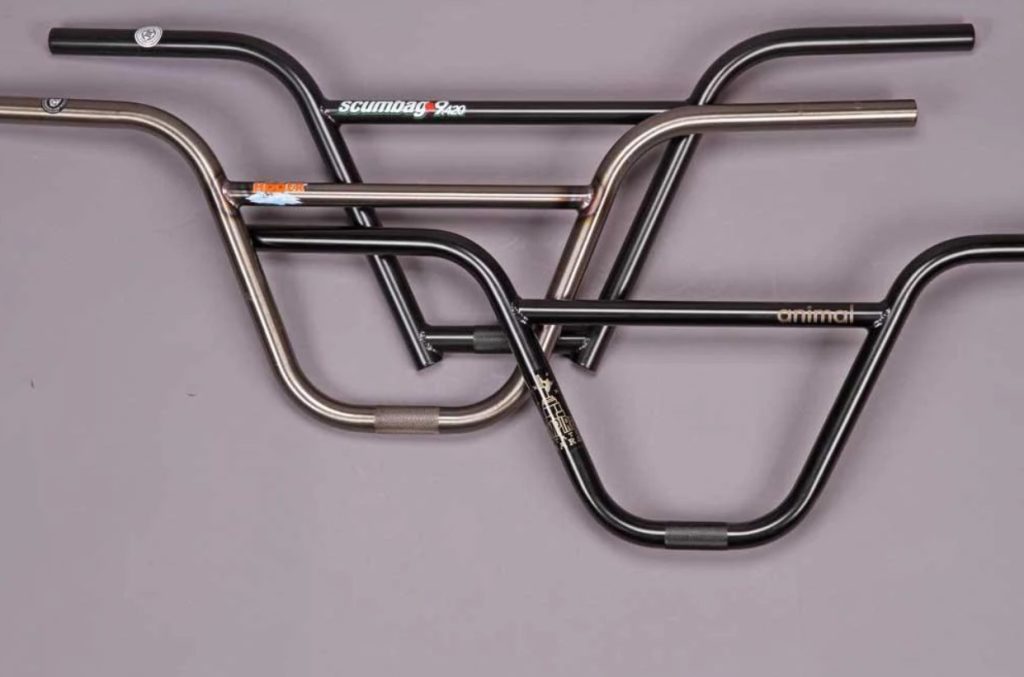
When it comes to BMX handlebars, there are several pros and cons to consider. Here are some key points to keep in mind:
Pros:
- BMX handlebars tend to be lightweight and durable, making them ideal for jumps, tricks, and other high-impact maneuvers.
- They come in a variety of shapes and sizes, allowing riders to customize their setup to their preferences.
- Many BMX handlebars have a “rise” that can provide extra leverage and control during certain tricks.
- Some handlebars feature unique bends or shapes that can help reduce hand fatigue and improve grip.
Cons:
- BMX handlebars can be relatively expensive, especially if you opt for high-end models.
- Depending on the shape and size of the handlebars, they may not be as comfortable for long rides or commutes.
- Some riders may find that certain handlebar shapes or sizes don’t work
H. Aero Handlebars
Aero handlebars, also known as aero bars, are a popular choice among road cyclists and triathletes aiming to increase their speed and efficiency.
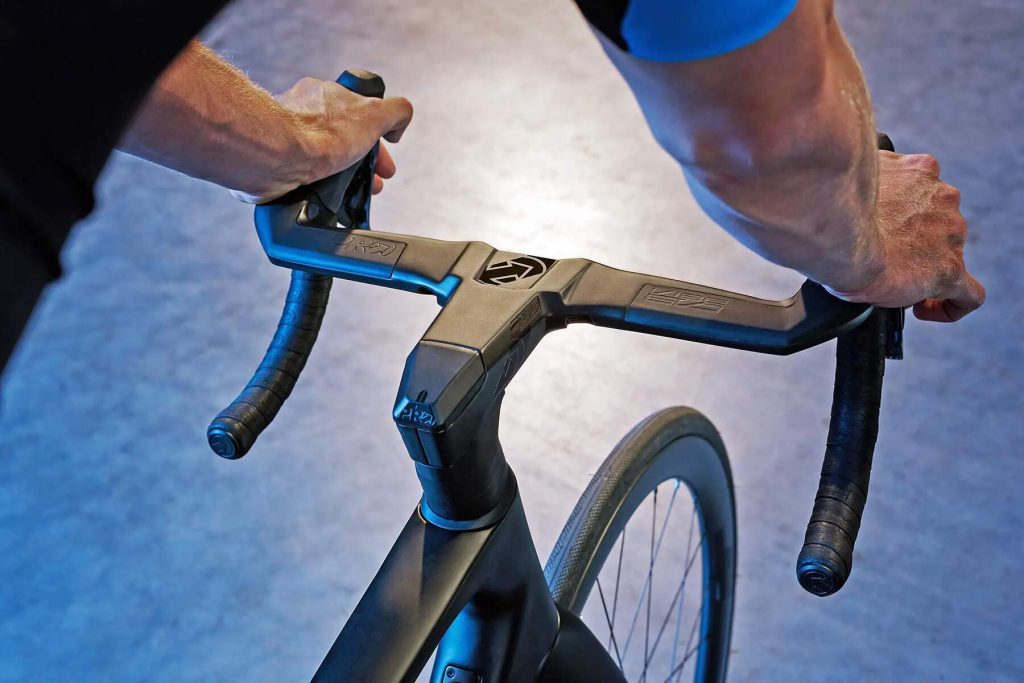
There are several pros and cons to consider when using aero bars, which we can summarize in bullet points below:
Pros:
- Reduced wind resistance and drag, allowing for faster speeds
- Improved aerodynamics, putting less strain on the body
- Greater stability and control, especially during fast descents or windy conditions
- More hand positions, reduce fatigue and discomfort on longer rides
- Potential for increased power output and efficiency
Cons:
- May not be suitable for all riders, as they require a more aggressive riding position
- Reduced visibility and maneuverability, making it harder to react to sudden obstacles or changes in terrain
- Can be uncomfortable for some riders, especially during long rides
- May not be allowed in certain races or competitions
Road Bike Handlebar Types
Road bike handlebars are an essential component of any road bike. They come in a variety of types, each with its own unique set of advantages and disadvantages.
Drop handlebars, also known as road bars, are the most common type of road bike handlebars. They are characterized by their aerodynamic design and comfortable grip, making them ideal for long rides.
Flat handlebars, on the other hand, are more suited for urban riding and provide a more upright riding position for better visibility.
Lastly, bullhorn handlebars are an excellent choice for those looking for a more aggressive and aerodynamic riding position.
Ultimately, the type of handlebar you choose will depend on your specific riding needs and preferences.
Mountain Bike Handlebars Types
Mountain bike handlebars come in a variety of shapes and sizes, allowing riders to find the perfect fit for their riding style.
The most common types are flat bars, riser bars, downhill bars, and cruiser/ comfort bars.
Flat bars offer a low profile that is great for cross-country and trail riding while riser bars provide more control when climbing or descending steep terrain.
Downhill handlebars are designed with an aggressive shape which gives maximum leverage on technical descents.
Lastly, cruiser/comfort handlebars feature extra width to reduce fatigue on long rides without compromising handling capabilities.
Bicycle Handlebars Types for Sitting Upright
Bicycle handlebars designed for sitting upright are the perfect choice for those who want to ride a bike while still keeping their back straight. These handlebars come in many shapes and sizes, so you can find one that fits your body type and riding style.
With an ergonomic design, these handlebars provide more comfort when cycling as they help support your wrists and arms in an optimum position.
In addition, some models of bicycle handlebars also feature adjustable stem lengths to further customize the fit for riders of different heights.

Credit: www.etsy.com
What is the Most Common Bike Handlebar?
The most common type of bike handlebar is the flat bar. It has a straight, horizontal design which makes it ideal for a variety of bikes and riding styles. This type of handlebar provides the rider with an upright posture that is both comfortable and efficient while pedaling.
The flat bar also allows riders to easily reach out and shift gears when needed, making it great for urban commuters who need to keep their hands on the bars at all times in order to control traffic flow or stop quickly if necessary.
Additionally, its wide surface area allows you to place your hands in several different positions depending on how you like to ride as well as what terrain you are covering.
Flat bars also provide more stability than other types of handlebars since they sit close to the frame of the bike, giving riders added confidence when navigating tight turns or rough terrain.
What are the Curved Handlebars Called?
Curved handlebars, more commonly known as mustache handlebars, are a style of bicycle handlebars that gained popularity in the early 20th century. This type of bar has a distinct curved shape with two “horns” on either side where riders can rest their hands.
Mustache bars have recently seen a resurgence in popularity due to the rise of vintage-style bicycles and fixies.
They provide an alternative to traditional flat or drop handlebars as they allow for multiple hand positions and easier steering control when riding at slow speeds.
As well as providing a unique aesthetic to bikes, mustache bars also offer better comfort thanks to their wider grip area which allows for better weight distribution and less strain on wrists than standard handlebars do.
What are 10 Speed Handlebars Called?
Speed handlebars, also known as drop bars or road bike handlebars, are a type of bicycle handlebar that has become increasingly popular over the years. They are usually made from lightweight aluminum alloy and feature a curved design to maximize aerodynamics and make your ride faster.
These bars typically have two drops on either side for gripping onto when you’re going downhill or need extra leverage.
Their flat design makes them ideal for riders who want to get more speed out of their bikes without sacrificing control. Though they may look intimidating at first glance, speed handlebars can be easily adjusted to fit any rider’s needs and preferences.
Additionally, they come in various widths so you can find one that fits you perfectly.
Whether you’re an experienced cyclist looking for an edge in races or just getting started with biking, these versatile 10-speed handlebars are sure to meet all your needs!
Which Handlebar Should I Get?
When it comes to choosing a handlebar for your bike, there are several things you should consider. First and foremost is the type of riding you plan on doing. Are you using your bike for road or mountain biking?
Different types of handlebars offer different levels of support and comfort depending on the terrain and what kind of ride you’re looking for.
Additionally, look at the width of the bar itself – wider bars offer more stability on tight turns, while narrower bars are ideal if you’re looking to keep up with traffic in urban areas.
You’ll also want to think about the material that makes up your bike’s handlebar – aluminum, carbon fiber, steel, or titanium being some popular choices.
Each offers different levels of durability as well as weight savings (or not).
Finally, make sure that whatever option you choose fits comfortably into your budget range so that you can get out there and enjoy cycling without breaking the bank!
Bike Handlebars Explained
Conclusion
Overall, handlebars are a great way to customize your bike and give it the look you want. From the classic flat bars to more adventurous mountain bars, there is a type of handlebar to fit any rider’s needs. While some may be intimidated by all of the different options available, each has its own set of benefits that can help make every ride more enjoyable.
With so many choices, riders can now find exactly what they need for maximum comfort and control while on their bikes.
